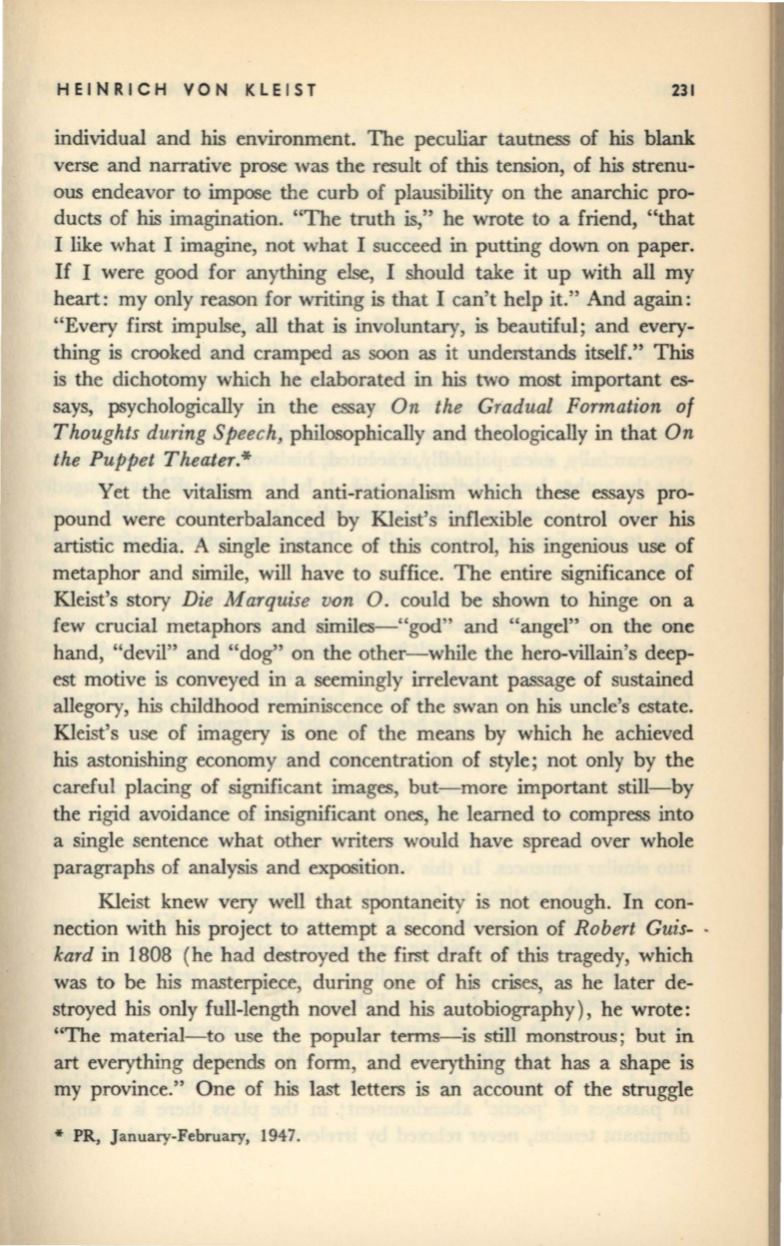
HEINRICH VON KLEIST
231
individual and his environment. The peculiar tautness of his blank
verse and narrative prose was the result of this tension, of his strenu–
ous endeavor to impose the curb of plausibility on the anarchic pro–
ducts of his imagination. "The truth is," he wrote to a friend, "that
I like what I imagine, not what I succeed in putting down on paper.
If
I were good for anything else, I should take it up with all my
heart: my only reason for writing is that I can't help it." And again:
"Every first impulse, all that is involuntary, is beautiful; and every–
thing is crooked and cramped as soon as it understands itself." This
is the dichotomy which he elaborated in his two most important
es–
says, psychologically in the
~ay
On the Gradual Formation of
Thoughts during Speech,
philosophically and theologically in that
On
the Puppet Theater.*
Yet the vitalism and anti-rationalism which these essays pro–
pound were counterbalanced by Kleist's inflexible control over his
artistic media. A single instance of this control, his ingenious use of
metaphor and simile, will have to suffice. The entire significance of
Kleist's story
Die Marquise von
O. could be shown to hinge on a
few crucial metaphors and similes-"god" and "angel" on the one
hand, "devil" and "dog" on the other-while the hero-villain's deep–
est motive is conveyed in a seemingly irrelevant passage of sustained
allegory, his childhood reminiscence of the swan on his uncle's estate.
Kleist's use of imagery is one of the means by which he achieved
his astonishing economy and concentration of style; not only by the
careful placing of significant images, but-more important still-by
the rigid avoidance of insignificant ones, he learned to compress into
a single sentence what other writers would have spread over whole
paragraphs of analysis and exposition.
Kleist knew very well that spontaneity is not enough. In con–
nection with his project to attempt a second version of
Robert Guis–
kard
in 1808 (he had destroyed the first draft of this tragedy, which
was to be his masterpiece, during one of his crises, as he later de–
stroyed his only full-length novel and his autobiography), he wrote:
"The material-to use the popular terms-is still monstrous; but in
art everything depends on form, and everything that has a shape is
my province." One of his last letters is an account of the struggle
*
PR, January-February, 1947.


